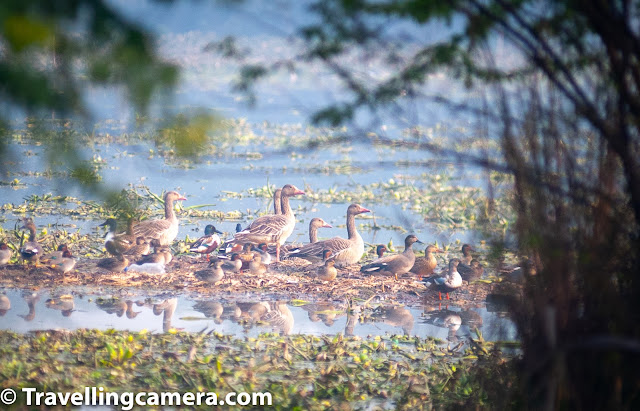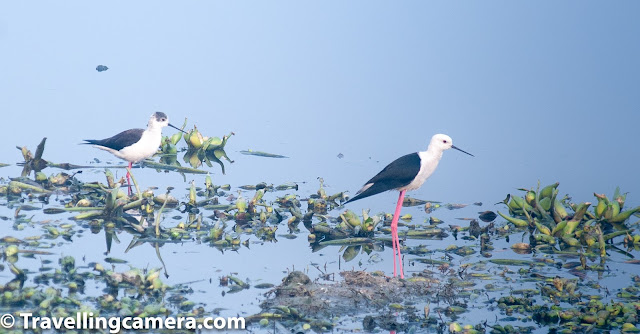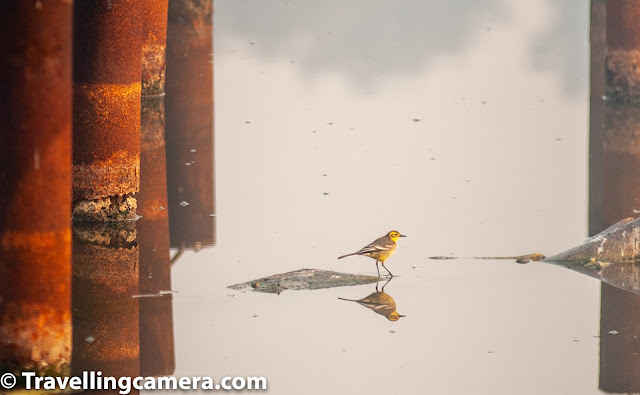If you are into bird watching, Delhi is a good place to be. Despite its huge human population, concrete structures, and pollution, Delhi still has a good variety of birds. Even though they have become fewer and less audible, you can still find them if you know where to go looking for them. While there are several places you can spot small birds in Delhi, in this post we are going to talk about places you can spot migratory birds and large and small aquatic birds. If you are looking for a weekend, day-long, or a few hour long outing, these are good spots to head to:
Okhla Bird Sanctuary
Right next to the Okhla Barrage, at the point where the Mahamaya Flyover begins, there is a spot that you would never suspect could be there. A quiet, green, and secluded Okhla Bird Sanctuary. Though you do occasionally hear some traffic noises, but more or less, it is just nature and you here.
It is the little birds - the sunbirds, the prinias, larks, and robins that greet you at first. At this point, you can spot some waterbirds in the distance. Once you have walked a few hundred meters, you come across the ducks and geese. Some of them are migratory. You walk about a kilometre and half and you come across the watch towers. From here you can witness ducks, storks, and ibises taking flight. And if you are lucky, you may spot a family of blue bull (neel gai) making their way across the swamp.
A few years back, you could take your car inside the sanctuary, but now that is not possible. Now you need to park your car at the nearby metro station and walk towards the sanctuary. That can be a pain because it is a fairly long walk between the entrance gate and the watch tower and there is another exit near the watch tower. The prospect of walking all the way to the entrance gate then looks like a difficult and unnecessary task. It is better to take a cab both ways.
Okhla Bird Sanctuary, though beautiful, seems increasingly suffocated year by year and that also reflects in the number of birds that landed here this year. In January 2020, which is the peak birding season in this part of the country, the number of birds in Okhla Bird Sanctuary was 50% less than the last year. All around the sanctuary, there's massive construction that's getting closer and closer to the sanctuary. Some measures need to be taken, else we might lose this tiny patch of nature forever.
Surajpur Bird Sanctuary
This is a relatively smaller bird sanctuary with a trail that is about 2 kilometers in length. It is very close to Greater Noida and is about half an hour drive from our home in Noida. The walkway goes around a central wetland and you have an opportunity to see migratory birds up close. And while you are at it, you can also probably spot quite a few resident birds as well. The walk is even shorter than that inside the Okhla Bird Sanctuary, but the plus point is that the birds are up close and can be photographed much more easily. Also, the wetlands start as soon as you enter the sanctuary, unlike Bharatpur, where you have the walk considerable distance before you are able to spot big flocks of large birds.
However, this sanctuary is also at a great risk. The land around the sanctuary has been bought by some big builders, and small housing colonies are also coming up around the sanctuary. These residential areas are so close by that you can hear what people residing there are talking about in their houses. The presence of humans also brings stray dogs, some of whom have made the sanctuary their home. And also, there were a few drains flowing into the sanctuary.
One important thing to know when you head to the Surajpur Bird Sanctuary is that you need permission from the DFO to enter. You can visit their website to and check out the contact details there or check with your birder friends, they are sure to have some clue as to how to get the permissions. This strictness is to ensure that only those who are really interested in birding get here. Otherwise the bird sanctuary was becoming notorious for lack of security.
Unlike most other sanctuaries, there are no charges to visit this bird sanctuary. If you have the permissions, you can simply walk in. There are people who go there for bird photography, and others that go there simply for birding. They usually just carry a field guide and a pair of binoculars, and spend hours just looking at the birds. However, the lack of tickets and proper boundaries has its own drawback. There have been sporadic incidents of snatching and also extreme PDA here because of which some of the reviews say that this is not a family destination. However, after the strictness, all that is under control as well.
Sultanpur Bird Sanctuary
It has been a while since we visited this bird sanctuary. Actually we have only visited it once when we happened to travel on the Gurgaon-Jhajhar road. We chanced upon this trip and decided to spend a few minutes here. We went there when there weren't too many birds. Summer was just getting started and it was still hot.
At that time we found the parking lot empty and there was absolutely no one inside. The bird sanctuary though was definitely well-maintained and we made up our minds to go back during season, but that hasn't happened yet. However, search on the Internet reveals that the sanctuary is doing good. Till 2018, it used to be closed for 5 months during summers. That duration has been reduced to 3 months now. And the list of resident and migratory birds here is also intriguing. We will definitely plan a visit as soon as we can.
We'll be back soon with part 2 of this post, with more birding destinations in and around Delhi. Stay tuned.




.jpg)









.jpg)
Comments